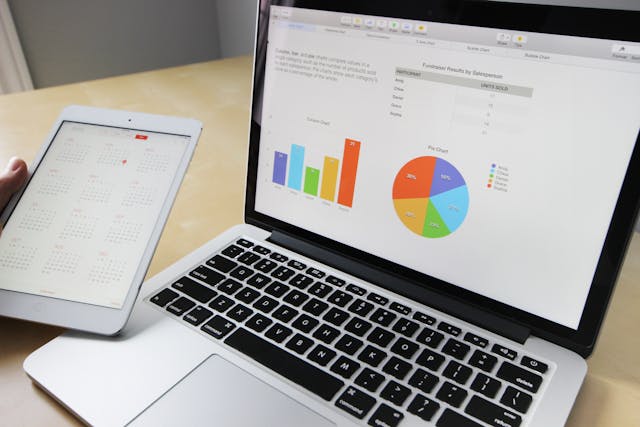When it comes to trading Forex like a professional, Fundamental Analysis is a critical tool you can’t afford to ignore. This approach digs deep into the core factors that drive currency values—such as economic reports, geopolitical events, and news releases. It’s the roadmap for understanding why the market is moving the way it is, and it empowers you to make smarter, more informed trading decisions.
Interpreting Economic Reports: The Key to Market Movement
At the heart of Fundamental Analysis are economic indicators—reports that measure the financial health of a country. These reports give you insight into where the economy is heading and, by extension, how its currency will perform.
1. Gross Domestic Product (GDP):
GDP is the most commonly watched indicator. It measures a country’s economic output over a specific time period. A rising GDP signals economic growth, which often strengthens a country’s currency. Conversely, a shrinking GDP can weaken a currency.
- Pro Tip: Keep an eye on GDP reports for the major currencies you trade. A stronger-than-expected GDP can be a bullish signal for that currency.
2. Inflation Reports (CPI & PPI):
Inflation is a crucial factor in currency valuation. The two most important reports here are the Consumer Price Index (CPI) and the Producer Price Index (PPI). Both measure the rate at which prices for goods and services are increasing.
- Inflation Effect: When inflation rises too quickly, central banks often step in to raise interest rates, which can boost the currency. On the other hand, too much inflation without intervention can cause a currency to lose value.
3. Employment Reports (NFP):
One of the most volatile reports is the Non-Farm Payroll (NFP) in the U.S., which is released on the first Friday of every month. It measures the number of jobs added or lost in the economy, excluding the farming sector.
- Why It Matters: A higher-than-expected NFP usually indicates a strong economy, pushing the USD higher. If the report is weak, you might see a decline in the USD.
News Releases & Geopolitical Events: Trading the Unexpected
In addition to economic reports, geopolitical events and breaking news also have a significant impact on currency values. Events like elections, wars, trade deals, or natural disasters can create large swings in the Forex market.
1. Central Bank Decisions:
Central banks are major players in the Forex market. Their decisions on interest rates and monetary policy can send shockwaves through the markets. Keep a close watch on announcements from central banks like the Federal Reserve, European Central Bank, and Bank of Japan to understand their impact on currency trends.
- Rate Hikes & Cuts: A rate hike generally strengthens a currency, while a rate cut weakens it. Learn to anticipate central bank moves by staying updated with the economic indicators they focus on, such as inflation and employment.
2. Political Instability:
Currencies often weaken during periods of political instability or uncertainty. Elections, changes in government, or conflicts can erode confidence in a country’s currency.
- Example: Think of Brexit. When the UK voted to leave the EU, the British pound dropped drastically due to the uncertainty surrounding the economic future of the country.
Using Economic Calendars: Timing Your Trades
One of the most powerful tools in Fundamental Analysis is the economic calendar.
The popular ones are Forex Factory, Myfxbook.com, Investing.com.
This calendar lists upcoming economic reports, news releases, and central bank announcements that are expected to impact the markets.
1. Plan Ahead:
Knowing when key reports are scheduled allows you to plan your trades in advance. You can either trade the news (if you’re comfortable with the volatility) or sit out during major releases to avoid getting caught in sudden price swings.
- Pro Tip: Websites like Investing.com and Forex Factory have detailed economic calendars. Make it a habit to check them daily, so you’re always aware of upcoming market-moving events.
2. Analyze Before and After the News:
Once you know what reports are coming, do some pre-analysis. Ask yourself: “What is the market expecting?” and “How might the currency react if the report is better or worse than expected?” After the news drops, compare the actual result with market expectations to guide your trading decisions.
- Example: If the U.S. is expected to release a strong NFP number, the USD might strengthen. However, if the actual number comes in below expectations, you could see the USD drop, creating a potential trading opportunity.
Conclusion: Turn Data Into Dollars
Mastering Fundamental Analysis is all about understanding the forces that drive currency movements. By keeping a pulse on economic reports, news releases, and geopolitical events, you can anticipate market trends and capitalize on them effectively. Combine that with your technical analysis, and you’ll have a well-rounded approach to navigating the Forex markets.
The more you understand the fundamentals behind currency movements, the better equipped you’ll be to make profitable decisions in your trading journey. Don’t just trade blindly—trade with purpose, backed by data.
Ready to take your trading to the next level? Start incorporating Fundamental Analysis into your daily routine, and watch how it transforms your approach!
Got any questions on Fundamental Analysis? Drop them in the comments below 👇 and let’s discuss how you can apply this powerful tool in your own trading strategy.
Discover more from 9jacashflow.com
Subscribe to get the latest posts sent to your email.






